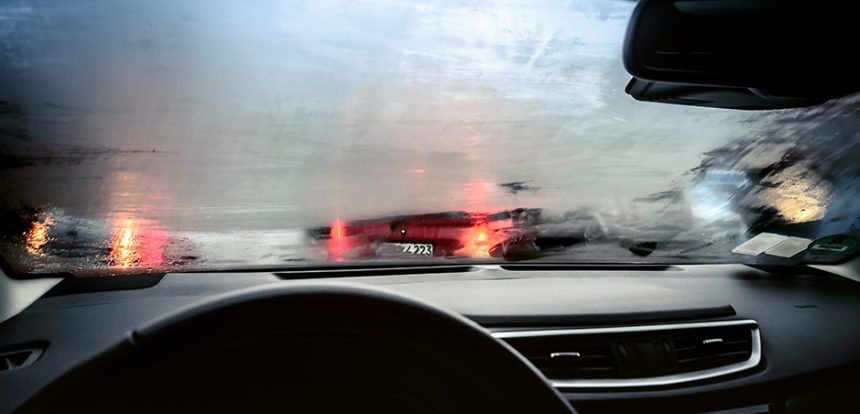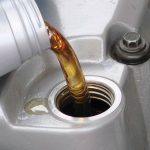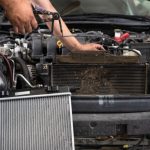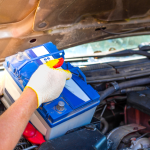When winter weather strikes, a frosted windshield can feel like an unwelcome morning surprise, delaying your commute and testing your patience. Fortunately, there are quick and effective methods to defrost your windshield and ensure a clear view before you hit the road.
In this article, we’ll share some friendly tips and tricks that will help you melt away that frost in no time. Whether you’re in a rush to get to work or just want to enjoy a leisurely drive, these strategies will have you seeing clearly and safely, allowing you to tackle the day ahead without the hassle of icy distractions. Let’s dive in and explore the fastest ways to defrost your windshield efficiently!
Table of Contents
- Understanding the Science Behind Frost Buildup
- Effective Techniques for Rapid Defrosting
- Tools and Products to Simplify the Process
- Preventative Measures for a Frost-Free Morning
- Q&A
- Key Takeaways
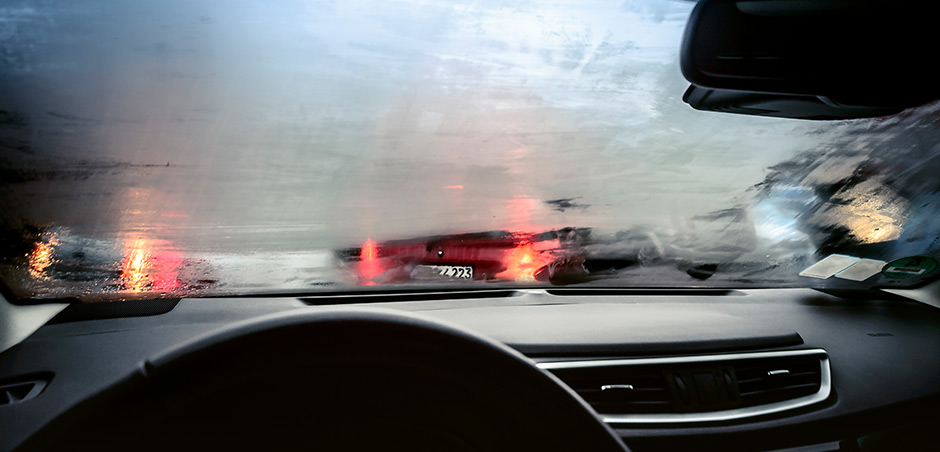
Understanding the Science Behind Frost Buildup
Frost buildup occurs when moisture in the air freezes on surfaces like windshields, particularly during cold nights or early mornings. This phenomenon is primarily driven by temperature differences and humidity levels. When the temperature drops below the freezing point of water (32°F or 0°C), the moisture in the air condenses and freezes, forming a layer of frost. The rate of heat loss is influenced by factors such as wind speed, cloud cover, and humidity—making some nights more prone to frost formation than others.
To effectively combat frost, it’s helpful to understand its formation process. Here are some key factors:
- Radiational Cooling: Clear skies allow heat to escape, causing surfaces to cool rapidly.
- Humidity Levels: Higher humidity means more moisture is available to freeze.
- Wind Chill: Wind can lower temperatures further, increasing frost likelihood.
To visualize the relationship between these factors, consider the following table:
| Factor | Effect on Frost Formation |
|---|---|
| Temperature | Colder temperatures increase the likelihood of frost. |
| Humidity | Higher humidity levels lead to increased frost risk. |
| Wind | Wind can accelerate heat loss, promoting frost. |
Effective Techniques for Rapid Defrosting
When faced with a frosty windshield, using common household items can expedite the defrosting process. One effective technique involves filling a spray bottle with a mixture of three parts vinegar to one part water. This solution not only helps to melt ice but also prevents it from forming again. Simply spray the mixture onto the windshield and let it sit for a few minutes before using your windshield wipers to clear away the ice. Additionally, you might consider using a soft-bristled brush to gently remove snow and a dirty layer of frost without scratching the glass.
For those who prefer warmth, a hairdryer can be an excellent tool for quick defrosting. Set it on the lowest setting and hold it a few inches away from the glass, moving it in a circular motion to avoid overheating any one spot. If you have some time before you need to leave, you could also park your car in a garage or under a covered area to keep it warmer, which can significantly speed up the melting process. Always remember to keep your defroster on and maintain your vehicle at a comfortable temperature to tackle stubborn ice effectively.
Tools and Products to Simplify the Process
To make the process of defrosting your windshield quicker and more efficient, consider investing in a few handy tools and products. Ice scrapers and de-icing sprays are essential for any car owner living in colder climates. Look for scrapers with a sturdy handle and a blade that can tackle even the thickest ice. De-icing sprays that contain antifreeze agents can work wonders by melting ice upon contact, saving you time and effort.
In addition to these basics, there are also advanced tools that can significantly enhance your defrost routine. Heated windshield covers provide an easy solution by preventing ice from forming overnight. Another innovative product is a warm air defroster, which can be plugged into your vehicle’s cigarette lighter to direct warm air onto the windshield while you prepare to drive. These gadgets not only simplify the process but also ensure a clear view without the hassle of scraping away ice.
Preventative Measures for a Frost-Free Morning
Preparing your vehicle the night before can significantly reduce the chances of waking up to a frosty windshield. To ensure a frost-free morning, consider implementing these simple yet effective strategies:
- Use a Car Cover: Invest in a quality car cover to shield your vehicle from frost and ice.
- Park in a Garage: If possible, keep your car in a garage to keep it away from cold air.
- Apply Anti-Frost Spray: A homemade mixture of vinegar and water can act as a deterrent against frost.
- Seal Up With Newspaper: Placing newspaper over your windshield can help absorb moisture and prevent frost from forming.
In addition to these preventive measures, maintaining your vehicle’s overall health can contribute to more efficient defrosting. Regularly check your windshield wipers and ensure your defrosting system is in good working condition:
| Vehicle Maintenance Tips | Frequency |
|---|---|
| Check Wiper Blades | Every 6 months |
| Inspect Defroster Function | Monthly |
| Keep Windshield Clean | Weekly |
| Monitor Antifreeze Levels | Each Winter Season |
Q&A
Q&A:
Q1: Why does my windshield freeze, and when is it likely to happen?
A: Windshields tend to freeze overnight when temperatures drop below freezing, especially in the presence of moisture. This often occurs during winter months or in the early morning hours. Frost can form quickly, especially on calm, clear nights.
Q2: What’s the quickest way to defrost my windshield?
A: The fastest way to defrost your windshield is to start your car and turn on the defroster. Set it to the highest heat setting and direct the airflow toward the windshield. Additionally, you can use your windshield wipers to help clear away the frost.
Q3: Should I use hot water to defrost my windshield?
A: It’s best to avoid pouring hot water on your windshield, as the sudden temperature change can cause the glass to crack. Instead, use lukewarm water if necessary, but the most recommended methods involve using your car’s defroster.
Q4: Are there any household items I can use to speed up the defrosting process?
A: Yes! You can create a homemade defrosting solution by mixing three parts vinegar with one part water. Spray this solution on your frozen windshield before you start your car. Another option is rubbing alcohol mixed with water; it effectively lowers the freezing point of water and can help in the defrosting process.
Q5: Why is it important to clear my windshield before driving?
A: Clear visibility is crucial for safe driving. A frosted or icy windshield can obstruct your view, increasing the risk of accidents. Ensuring your windshield is clear helps you not only see the road but also respond effectively to other vehicles and pedestrians.
Q6: How can I prevent my windshield from freezing overnight?
A: To prevent freezing, consider covering your windshield with a blanket or a specialized frost guard. Alternatively, you can spray your windshield with a mixture of vinegar and water the night before to help deter frost. Parking your vehicle in a garage or sheltered area can also help.
Q7: What should I avoid doing when defrosting my windshield?
A: Avoid scraping your windshield with metal objects, as this can scratch the glass. Also, refrain from using the car’s heating vents on full blast to thaw the glass too quickly, as this can also lead to cracks or shattering.
Q8: Is there anything else I should keep in mind during winter driving?
A: Absolutely! Always keep an ice scraper and a snow brush in your vehicle, and make sure your wipers are in good condition. It’s also wise to keep an emergency kit with warm clothing, food, and first aid supplies in case of unexpected delays during winter driving.
Q9: How do I maintain wipers and defrosters for better winter performance?
A: Regularly check your wiper blades for wear and replace them if they’re showing signs of damage. Make sure your defroster vents are clear of debris, and periodically inspect your vehicle’s heating system to ensure it’s functioning effectively.
By following these tips, you’ll not only speed up the defrosting process but also ensure safe driving during those chilly winter mornings. Happy driving!
Key Takeaways
ensuring a clear view through your windshield is essential for safe driving, especially during the colder months. By adopting these quick and effective methods to defrost your windshield, you can save precious time and prevent the frustration that often comes with icy mornings. Whether you choose to rely on your vehicle’s defrost setting, warm water, or even a homemade de-icing solution, the key is to act swiftly and safely. Remember, preparation is key—keep your tools handy and consider covering your windshield overnight to minimize frost buildup. With these tips in your toolkit, you can conquer those chilly mornings with ease. Stay safe on the road, and enjoy your clearer view!




